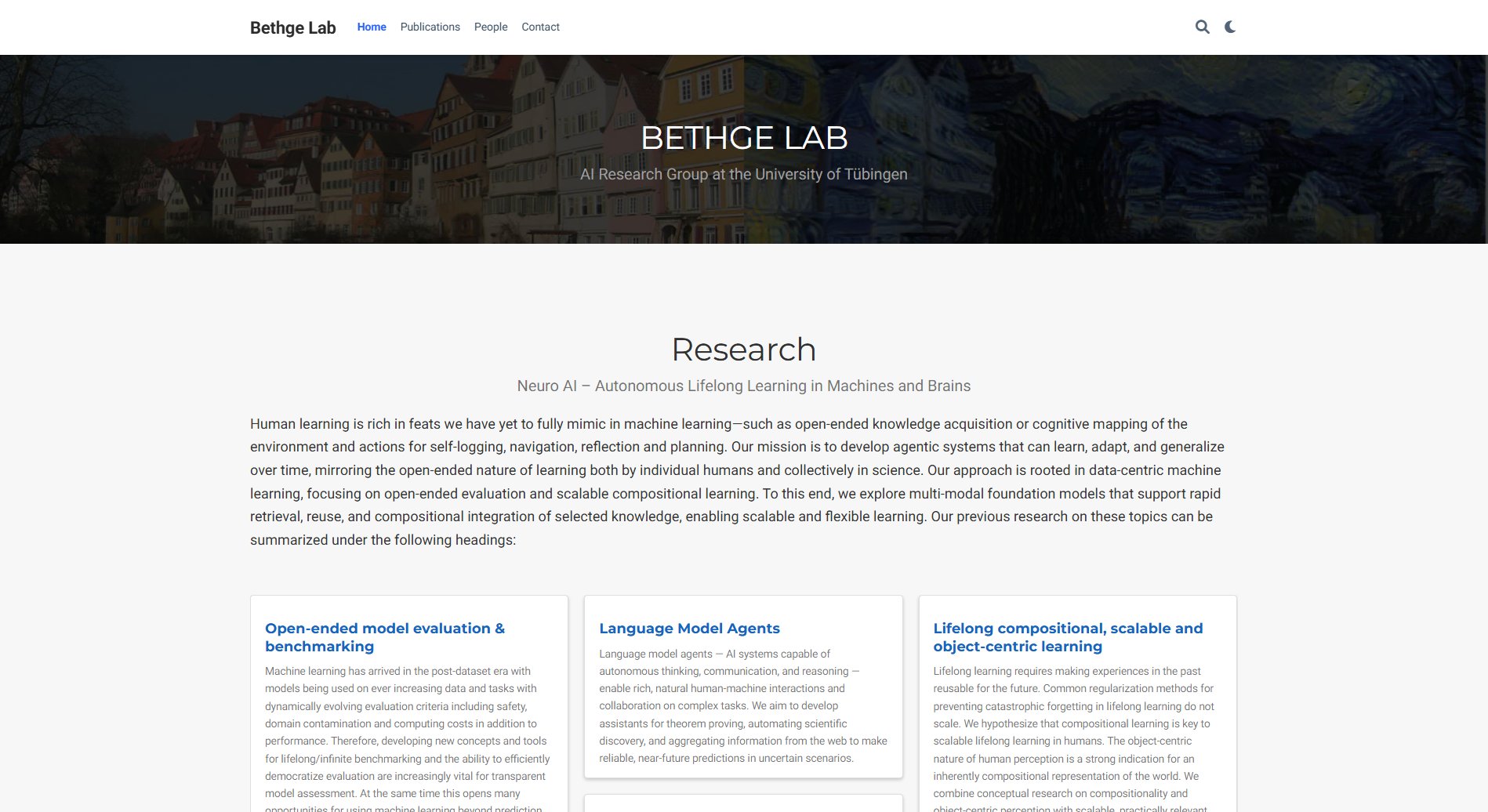Bethge Lab
Advancing AI through lifelong learning and neuro-inspired models
What is Bethge Lab? Complete Overview
The Bethge Lab is a research group focused on advancing artificial intelligence (AI) by drawing inspiration from human and neurobiological learning processes. Their mission is to develop agentic systems capable of open-ended knowledge acquisition, cognitive mapping, and autonomous lifelong learning. The lab explores multi-modal foundation models that facilitate rapid retrieval, reuse, and compositional integration of knowledge, enabling scalable and flexible learning. Their research spans several key areas, including open-ended model evaluation, language model agents, lifelong compositional learning, mechanistic interpretability of brain representations, and attention mechanisms in humans and machines. The lab collaborates with academic institutions and startups to bridge the gap between theoretical research and practical applications.
Bethge Lab Interface & Screenshots

Bethge Lab Official screenshot of the tool interface
What Can Bethge Lab Do? Key Features
Open-ended Model Evaluation & Benchmarking
The Bethge Lab develops innovative tools for lifelong and infinite benchmarking of AI models, addressing dynamically evolving evaluation criteria such as safety, domain contamination, and computing costs. This approach enables transparent model assessment and supports continual scientific model building.
Language Model Agents
The lab researches AI systems capable of autonomous thinking, communication, and reasoning, facilitating natural human-machine interactions. Applications include theorem proving, scientific discovery automation, and reliable information aggregation for near-future predictions in uncertain scenarios.
Lifelong Compositional Learning
Focusing on scalable and object-centric learning, the lab investigates how past experiences can be reused for future tasks. Their work combines conceptual research on compositionality with practical lifelong learning methods, inspired by the object-centric nature of human perception.
Modeling Brain Representations
The lab develops machine learning models for neural data analysis to understand how biological neurons perform inference and learning. They build digital twins of brain areas (e.g., retina and visual cortex) and create tools for interpreting neural network computations.
Attention in Humans and Machines
Researching attention mechanisms, the lab compares human and machine learning processes to enhance AI models. They study image and video saliency, scanpath prediction, and eye movements in VR, integrating these insights into computer vision and behavior models.
Best Bethge Lab Use Cases & Applications
Scientific Research Automation
Researchers can utilize the lab's language model agents to automate parts of the scientific discovery process, such as hypothesis generation and data analysis, accelerating breakthroughs in various fields.
AI Model Evaluation
Organizations developing AI models can adopt the lab's open-ended benchmarking tools to ensure their models meet evolving standards for performance, safety, and efficiency.
Neuroscience and AI Integration
Neuroscientists and AI researchers can apply the lab's insights into brain representations and attention mechanisms to develop more biologically plausible and efficient AI systems.
How to Use Bethge Lab: Step-by-Step Guide
Explore the research areas on the Bethge Lab website to identify projects aligned with your interests or needs.
Review published papers and ongoing studies to understand the methodologies and tools developed by the lab.
Collaborate with the lab by reaching out through academic or professional networks to discuss potential partnerships or applications of their research.
Implement findings and tools from the lab's research into your own projects, leveraging their open-source contributions where available.